Built in 2013 within a densely populated residential area in Lubliniec, Poland, this contemporary residence was designed by Dyrda Fikus Architekci and features 1,819 square feet of living space. Its exterior façade boasts a dark asphalt color with no decorations, which contributes to a minimalistic feel. The façade’s homogenous appearance is owed to a layer of sprayed polyurethane that was applied onto its surface. This technology is typically implemented in industrial projects, and it has been used for the first time on a domestic structure in Poland.
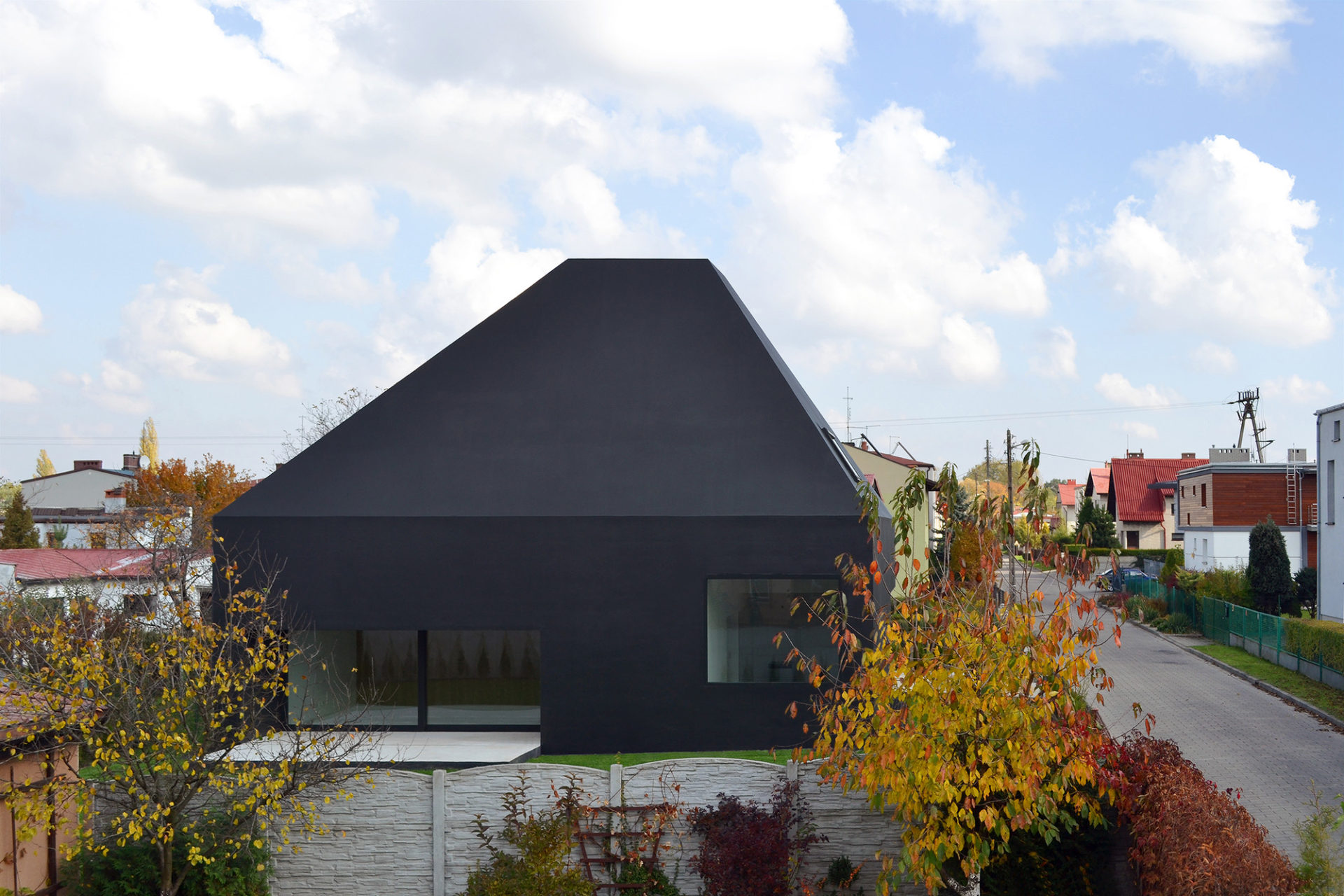
The abode impresses with a compact and sustainable form that ensures privacy from the street while opening up to a west-facing garden. The project’s two-face duality is also noteworthy, as it creates a stunning contrast of color and texture. The exterior face is dark and mysterious, while the interior flaunts bright and spacious living areas that encourage comfort and wellness.
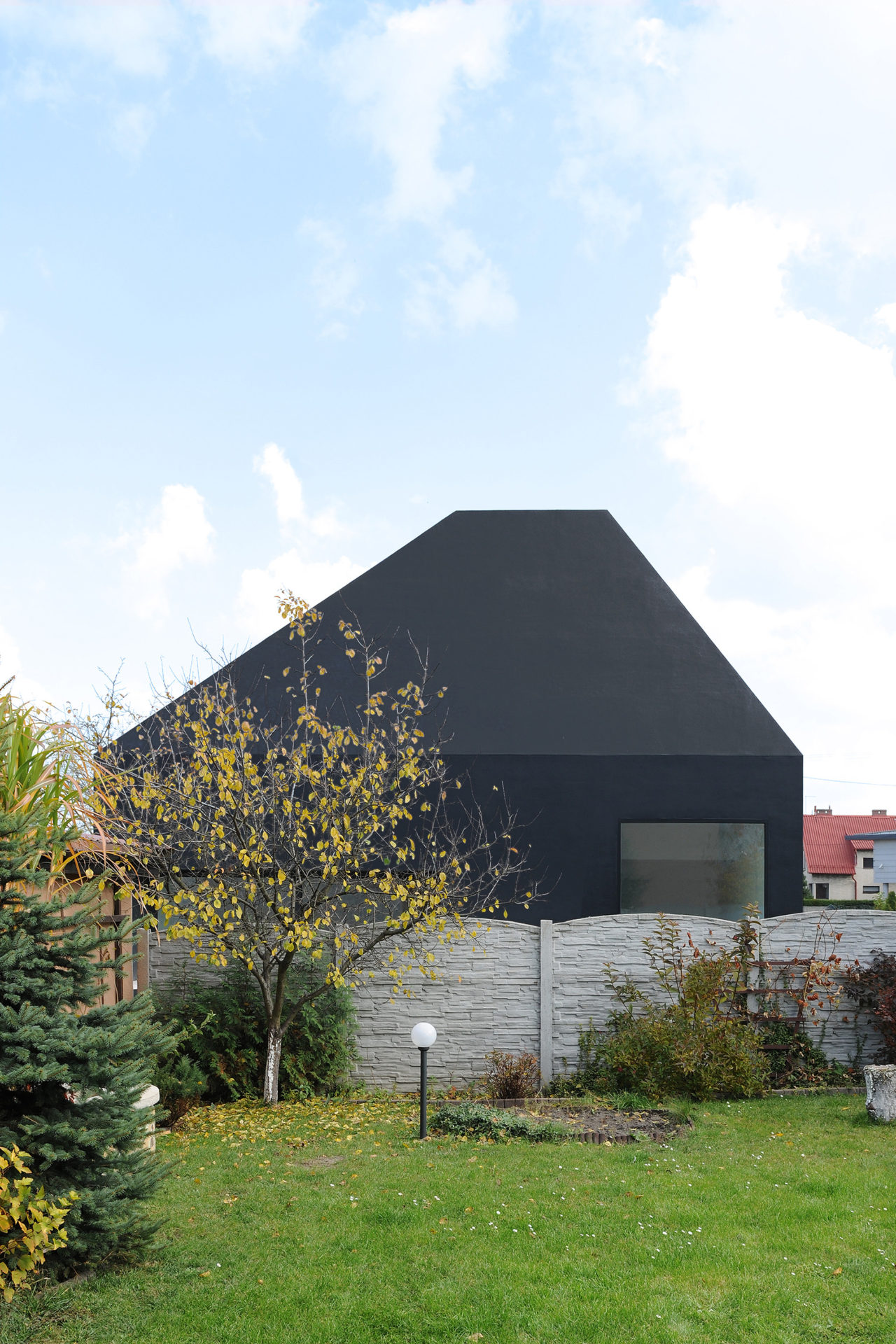
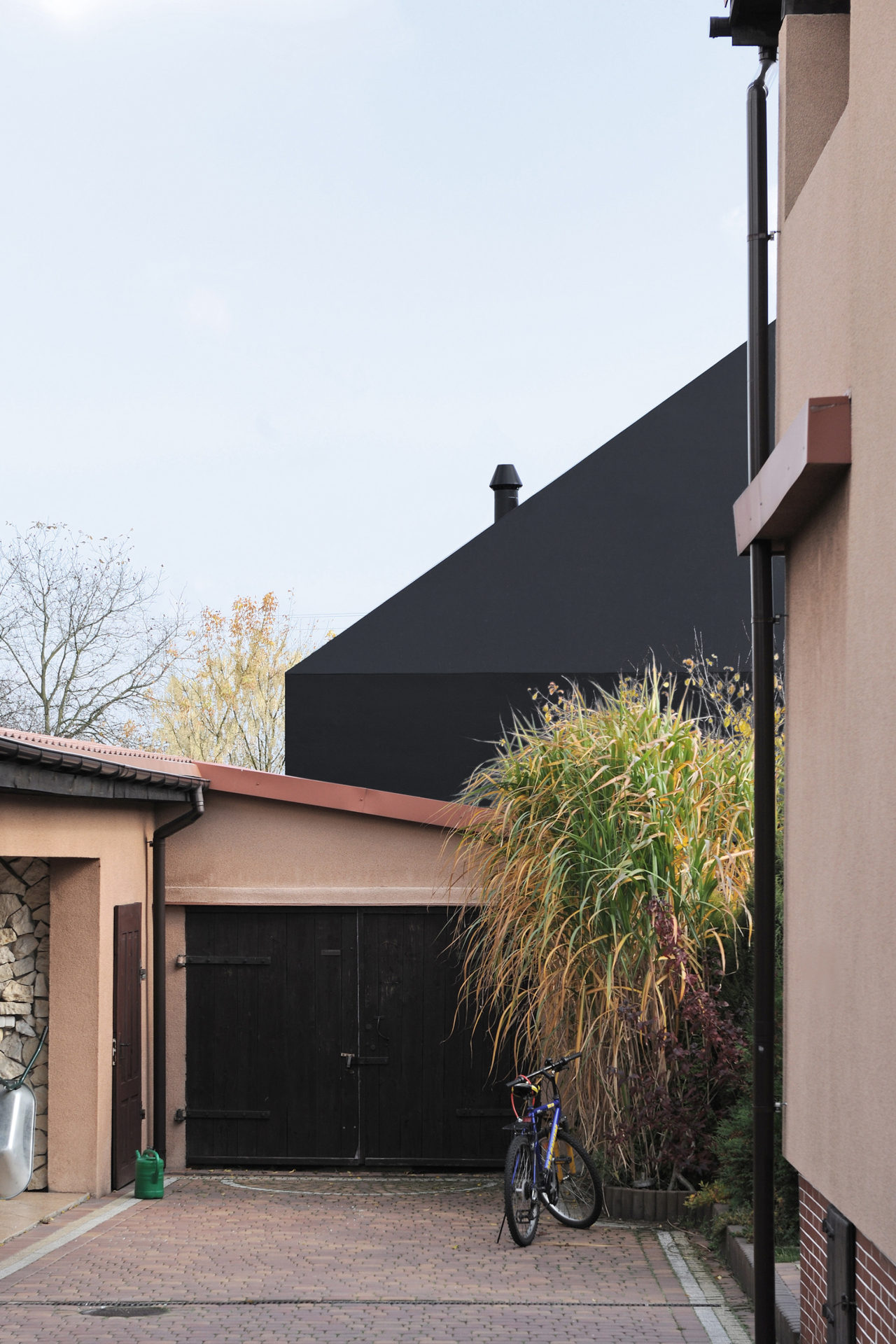
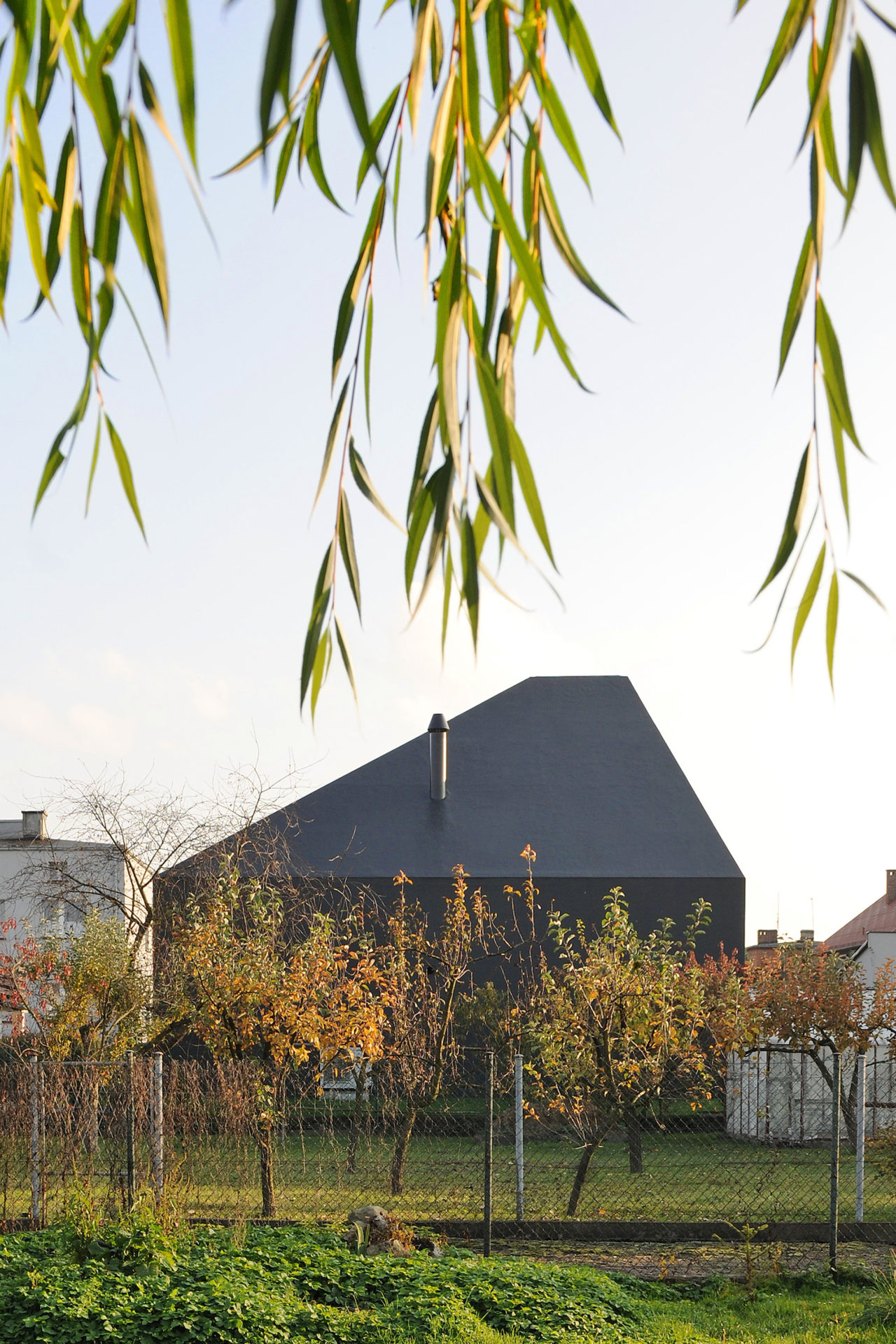
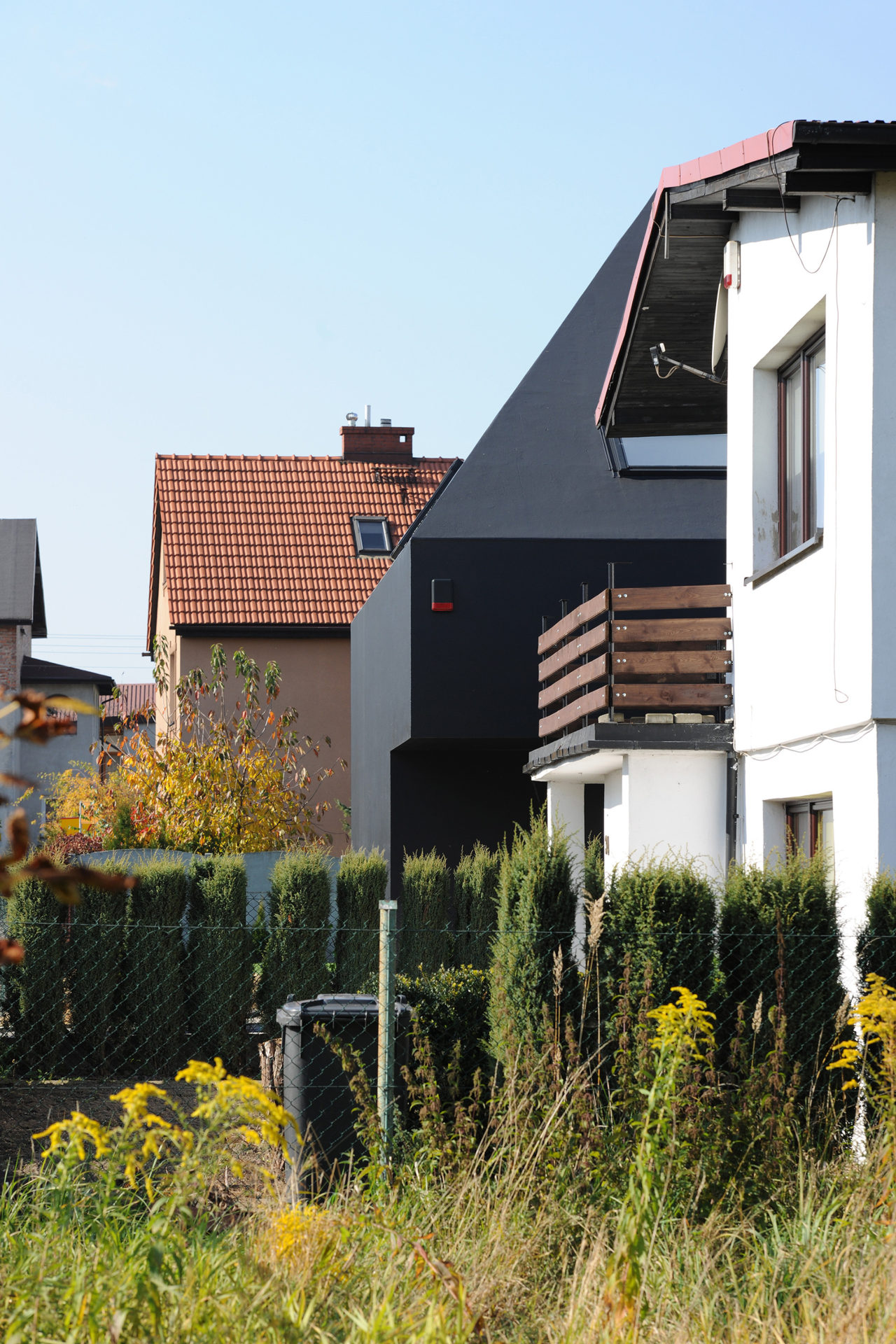
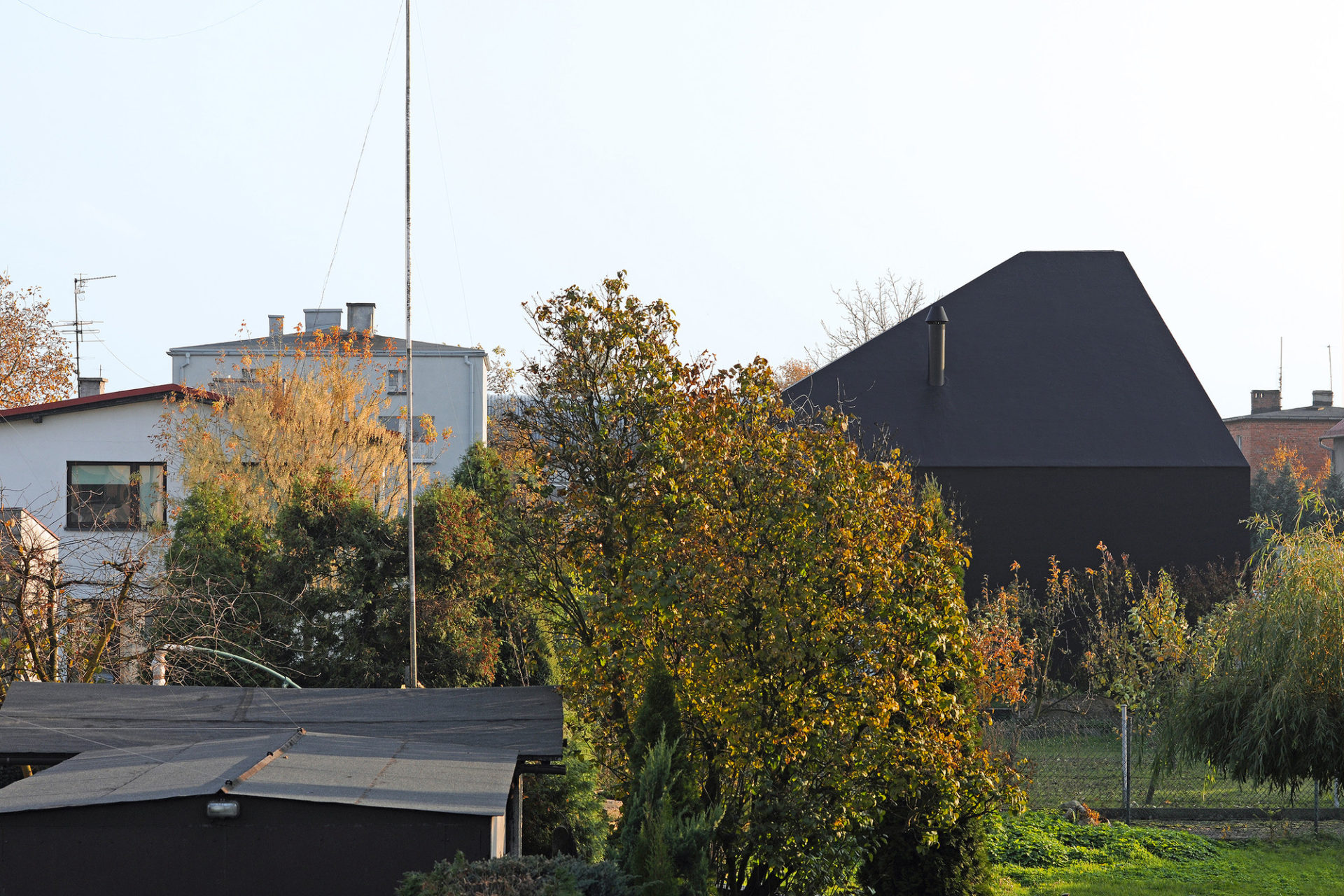
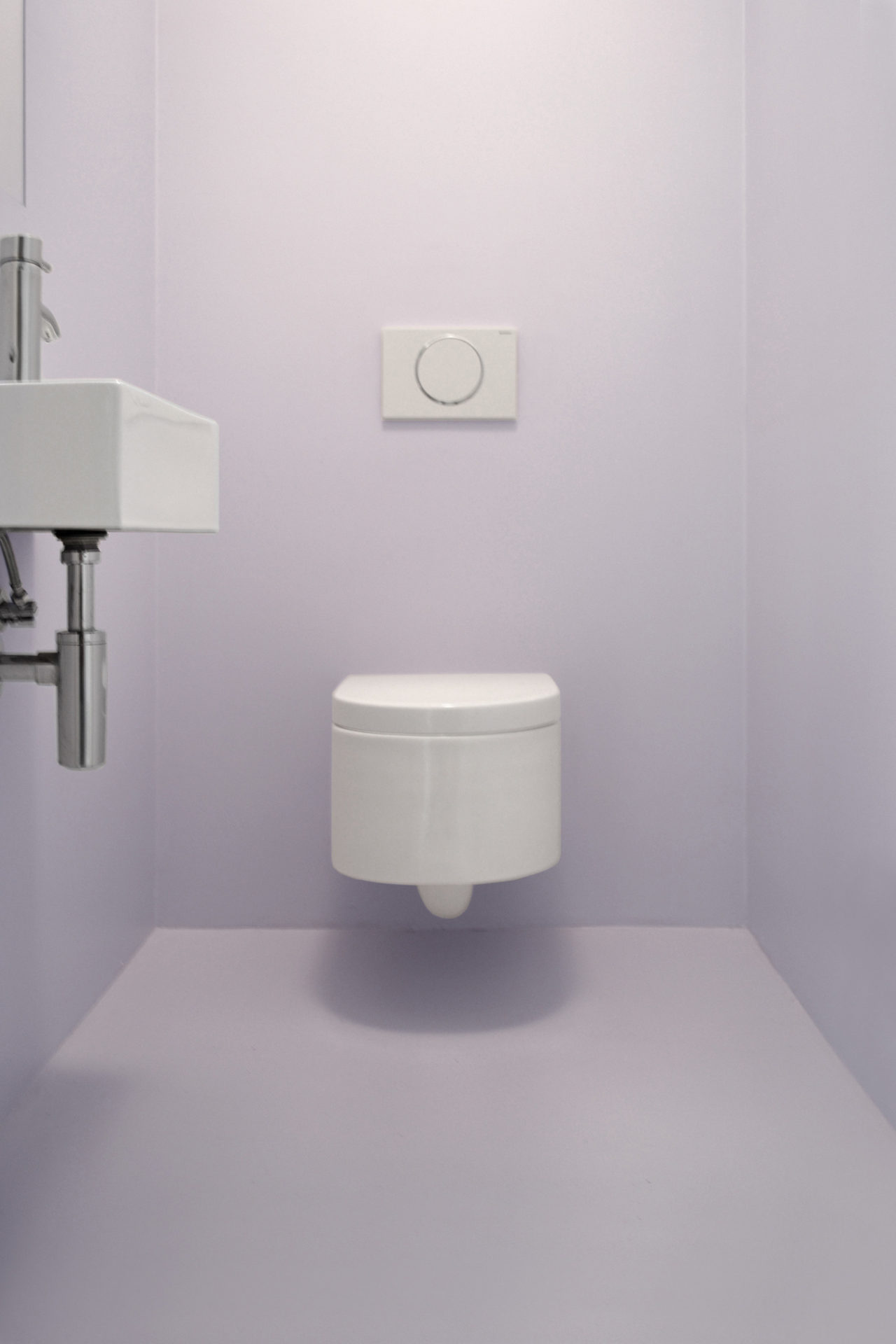
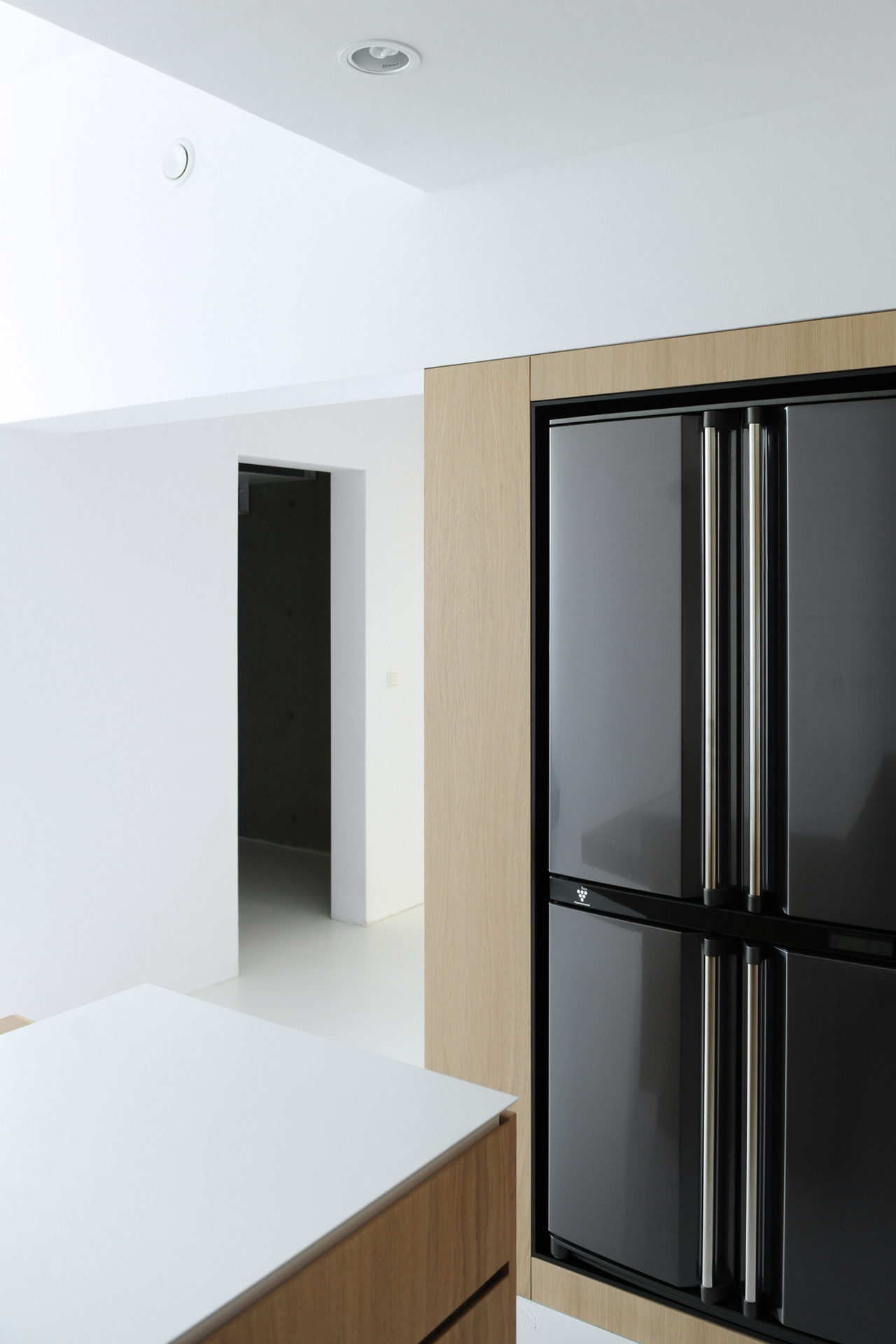
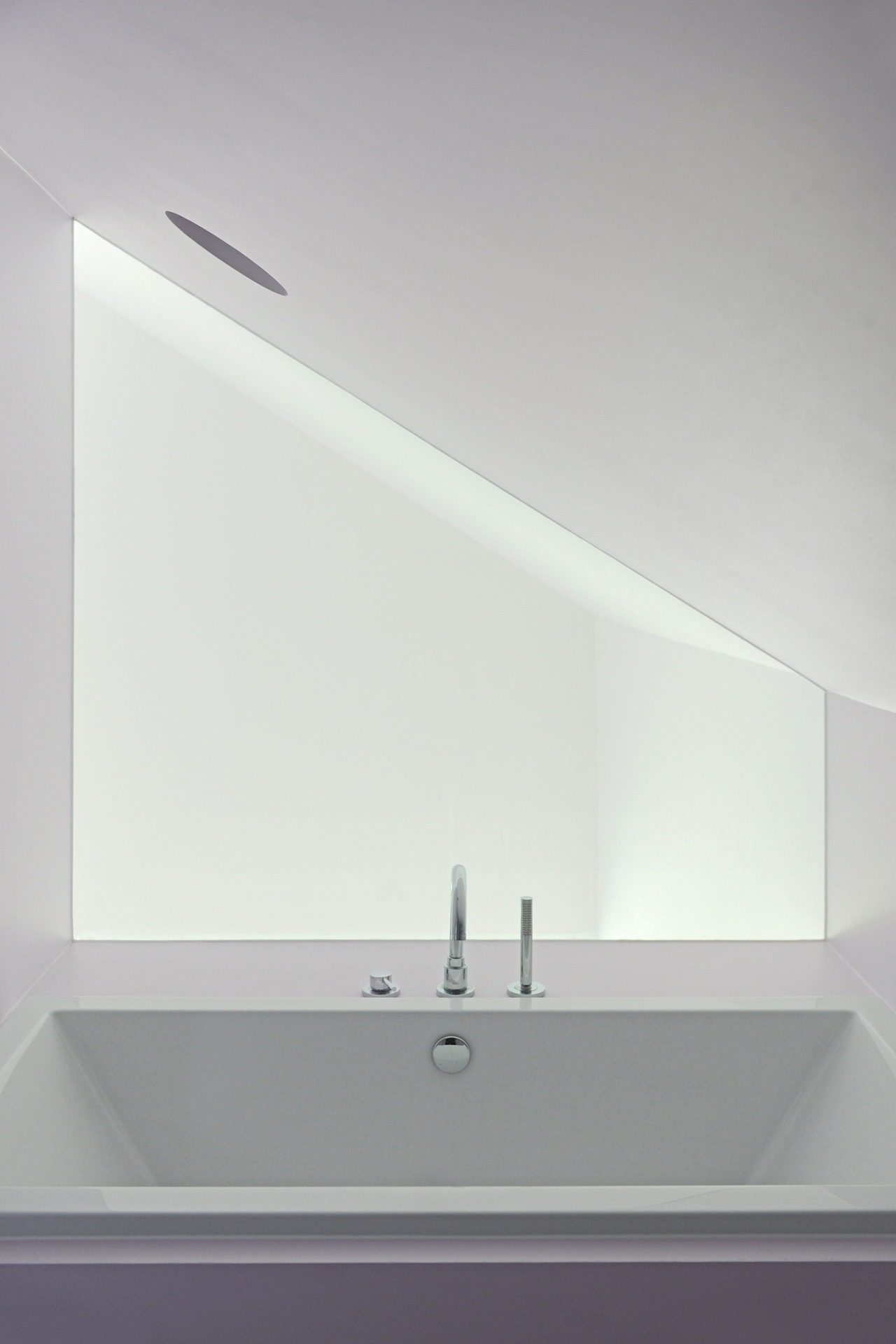
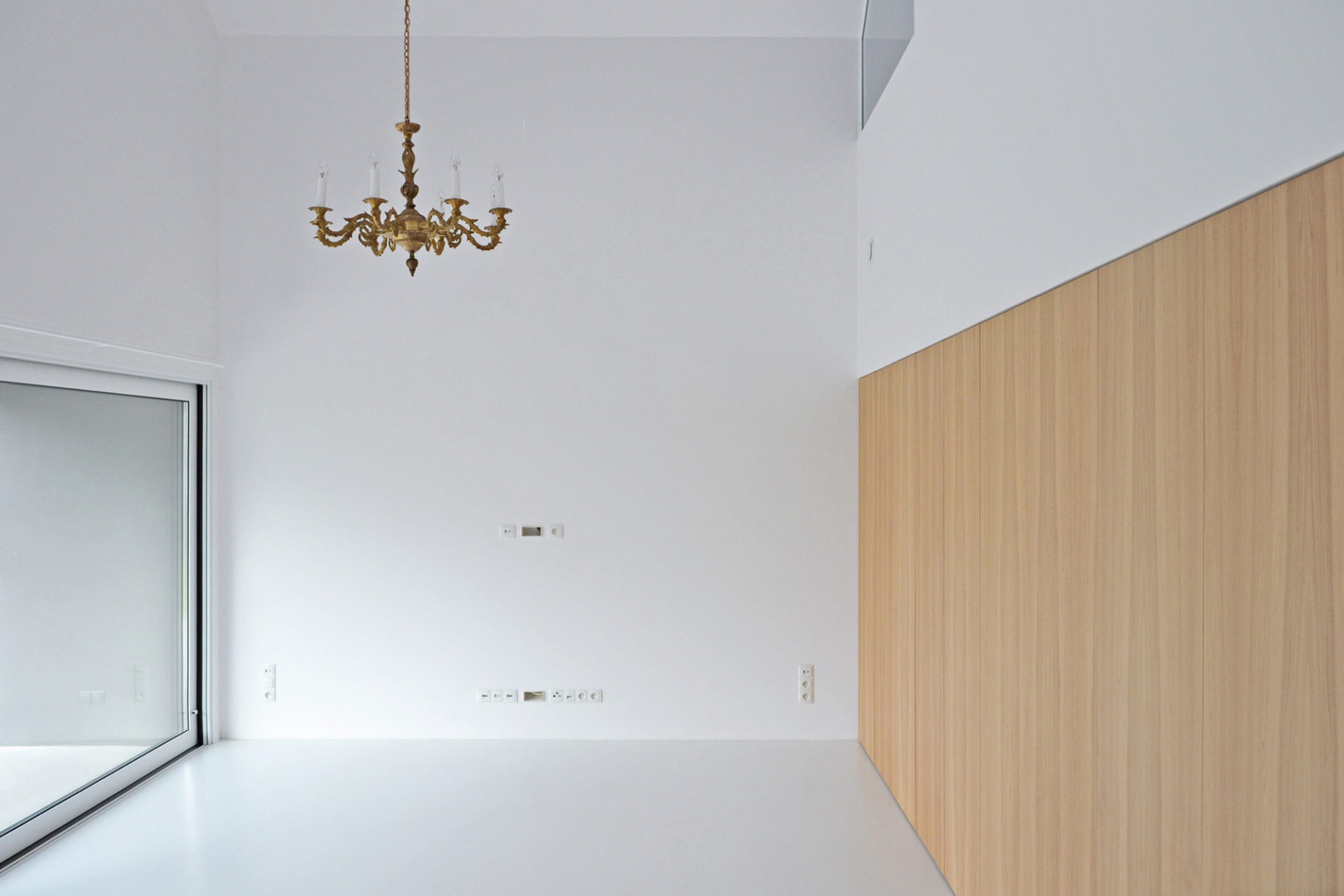
From the architect:
The building is situated on a small 510m sq. plot, among a densely built-up residential area of detached houses.
The residential street where the proposed house is located is of eclectic character. The formal and stylistic chaos of individual buildings is in opposition to the spatial order of the street. This divergence influenced the design concept, which favored the spatial context over the formal one, ie. it was more important to match to the order of the street (compact shape, emphasized building line, proportions of the edifice) than the form of the building itself. Regardless of it, the new house will always be just the next component of the existing stylistic chaos.
The limited site area, as well as the south side access, were the two main factors which determined the final house position within the plot. Placing the building maximally close to 3 of the site boundaries allowed to enlarge the garden as much as possible and therefore maximize the limited development potential of the site.
The compact and sustainable form of the proposed building encloses from the street and opens onto the west facing garden. The hipped form of the roof was dictated by the almost square dwelling house footprint. A simple pyramid roof underwent sculptural transformation. Firstly, the top of the roof was ’dragged’ towards the garden to achieve a visual set back from the adjacent property, then the roof was inclined towards the street to emphasize the existing building line, and finally the rooftop was ‘cut off’ to form a large (2.5m x 1.8m) skylight, enabling the daylight to penetrate deep down inside the house.
The form of the house varies from the buildings in close vicinity. The lack of decorative features or pastel colored elevations draw attention to the radical form and dark asphalt color. The building is a manifesto of both proportion over decorative features and urban planning over a building form.
The homogenous appearance of the building has been achieved thanks to externally applied sprayed polyurethane layer. The technology, typically used in industrial construction, has been used in such a way in Poland for the first time. The proposed house consists of two ‘faces’: dark and inaccessible from the outside and bright and spacious from the inside. Contrast intended.
Architects: Dyrda Fikus Architekci
Location: Lubliniec, Poland
Design Team: Marta Dyrda, Radek Fikus
Area: 169.0 sqm
Project Year: 2013
Photographs: Bartłomiej Osiński


